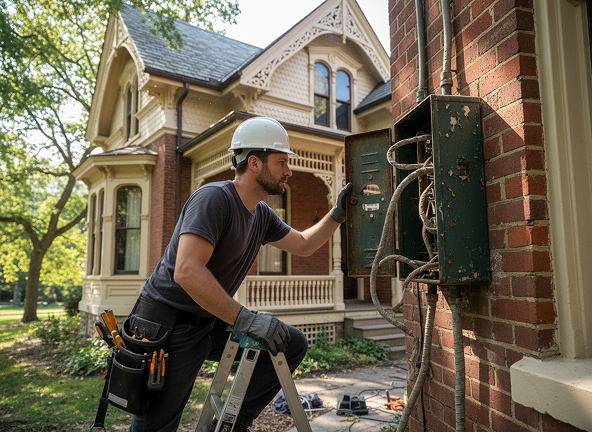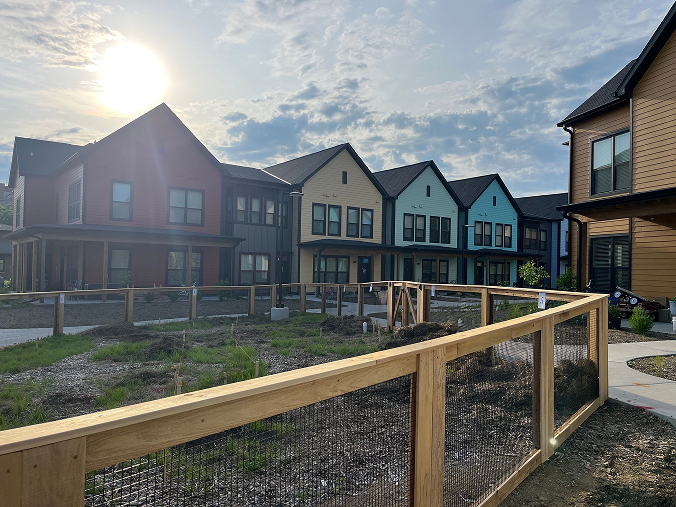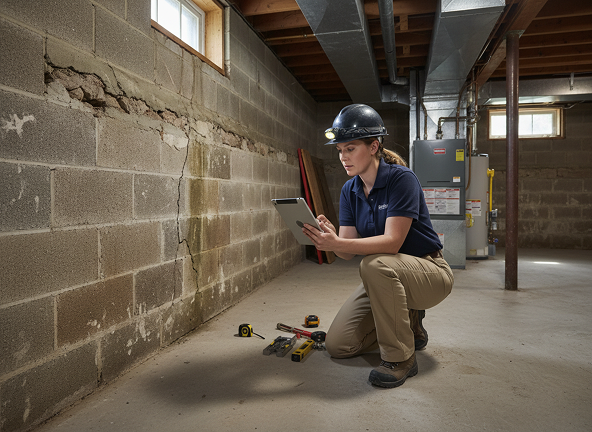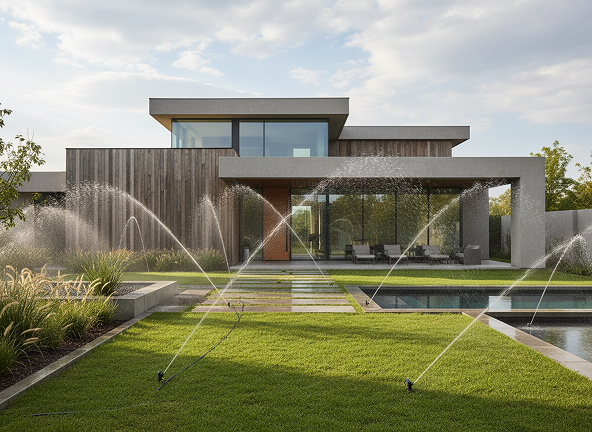Website Basics for Your Contracting Business

Building a Modern Website to Grow Your Contracting Business
It’s a modern-day maxim: your website is today’s business card. For most customers, it’s the first real impression they get of your business — long before they pick up the phone or meet you on-site. That first glance has to communicate credibility, professionalism, and trust.
But here’s the hard truth: most visitors spend less than 10 seconds deciding whether to stay on your page. If they can’t find what they need, they’re gone — probably to a competitor who made it easier.
So what separates a forgettable contractor website from a high-performing one that turns visitors into leads? Let’s break down what works, what doesn’t, and what’s changing in 2025 and beyond.
The Foundations of a High-Performing Contractor Website
Before we get into the do’s and don’ts, it helps to understand what really makes a great contractor site tick. Every page, image, and headline should serve one of three goals:
- Showcase credibility – through visuals, certifications, and proof of past work.
- Drive conversions – with clear calls to action that make it easy to contact you.
- Boost discoverability – by optimizing for the way homeowners and businesses actually search.
Let’s look at how to bring all three together.
Design for the 10-Second Impression
People don’t read websites — they scan them. That means your layout, whitespace, and content hierarchy matter as much as your copy.
DO: Put your call to action at the top of the page
Your phone number, contact button, or “Request an Estimate” form should be visible before anyone scrolls. Make it easy to act fast.
Example: A sticky header with your phone number and a bright orange “Get a Quote” button keeps your leads one click away.
DON’T: Bury key information below the fold
If your certifications, reviews, or best projects are hidden halfway down the page, most visitors will never see them. Highlight credibility early — think trust badges, before-and-after photos, or a one-line value proposition.
Use Whitespace and Structure to Your Advantage
A cluttered website feels unprofessional. A clean one builds confidence and keeps visitors focused on what matters.
DO: Embrace whitespace and simple navigation
Modern contractor websites use modular layouts, clear typography, and short content sections. Each page should guide the visitor’s eye logically — from service areas to proof to contact.
DON’T: Try to cram everything on one page
Give each major topic its own space — an “About” page for your story, a “Services” section for what you do, and a “Gallery” or “Projects” page for your work. This isn’t extra fluff; it’s structure.
Build for Mobile First
Most homeowners searching for a contractor are doing it from their phone — often on-site, in the moment.
DO: Design for mobile from the ground up
Use responsive layouts, fast-loading images, and large buttons that are easy to tap. Test every page on multiple devices.
Example: If a potential customer can’t easily find your number or tap a “Call Now” button, you’re losing leads every day.
DON’T: Make users zoom or scroll endlessly
Avoid PDFs, complex tables, or oversized images that break on mobile. Keep text legible and interactions simple.
Keep Your Content Fresh and Useful
A contractor website isn’t a one-time project — it’s a living marketing tool.
DO: Update content regularly
Add new project photos, testimonials, or blog posts that answer real questions customers ask (like “How much does it cost to build a deck?” or “Do I need a permit for a fence?”). This helps with both SEO and credibility.
DON’T: Let your site go stale
Old dates, broken links, or outdated styles tell visitors you’re not paying attention. Search engines notice too — and will lower your rankings as a result.
Optimize for Search — and for Humans
Search visibility is everything, but traditional SEO isn’t enough anymore. The rise of generative search (AI-enhanced results) means content must answer intent clearly and contextually.
DO: Focus on content quality, not just keywords
Write for real people first. Create pages that clearly explain your services (“Fence Installation in Austin”), include before-and-after photos, and describe your process. Add FAQ sections that mirror the questions customers actually ask in search.
DON’T: Over-optimize
Stuffing pages with repetitive phrases (“best contractor near me”) hurts readability and trust. Search engines now reward clarity, not clutter.
Showcase Proof and Personality
Trust is currency in the contracting business. Your website should make visitors feel like they already know — and can rely on — your team.
DO: Present all the information your customers need to make a decision
Show your best work through photos, case studies, and client testimonials. Include recognizable logos if you work with known builders or suppliers. Add Google reviews and embed video walkthroughs of recent jobs.
DON’T: Clutter your pages with unnecessary widgets
Keep it focused on what matters: visuals, proof, and contact options. Fancy animations and plug-ins can slow your site and distract from your credibility.
Specialty Services and Advanced Features to Consider
If you’re ready to go beyond the basics, here are specialty tools and strategies that can set your contracting website apart:
- Project galleries with filters – Let visitors sort your past work by service or material type.
- Quote calculators or estimators – Give users a way to get rough cost estimates before contacting you.
- Interactive service maps – Show where you’ve worked to establish regional credibility.
- Scheduling integrations – Allow visitors to book consultations directly from your site.
- Chat tools and AI assistants – Use chatbots to answer basic questions or qualify leads instantly.
- Analytics dashboards – Tools like Hotjar or GA4 help you track how people navigate your pages.
The Right Platforms and Tools
For contractors, the goal isn’t just to build — it’s to maintain and adapt. Choose a website platform that’s easy to update and optimized for local search.
DIY Platforms
- Webflow – Ideal for contractors who want design control without code.
- WordPress – A flexible, plugin-rich option for those needing deep SEO features.
- Squarespace / Wix – Great for simplicity, especially if you’re just starting out.
Service Consultants and Full-managed Solutions
There are several companies that can build and manage your website, and many of them specialize in building your home service business website.
Pair your platform with tools like Google Business Profile, Ahrefs, Semrush, or Local Falcon to manage visibility and reviews effectively.
Keep It Simple. Keep It Human.
A great contractor website doesn’t try to be flashy — it builds trust, answers questions, and makes it easy for people to get in touch. Every color, word, and button should reinforce that goal.
When done right, your website isn’t just a brochure. It’s a living portfolio, a lead-generation machine, and a reflection of the craftsmanship you bring to every job.
So take another look at your homepage — and ask yourself:
Would you hire you?
If the answer’s “not yet,” you’ve got the blueprint to fix it.
Categories
INDUSTRY
FAQs
Related posts
Not quite ready for a demo? Start a free 14-day trial of ArcSite with no credit card required!
Available on iOS, Android, and Windows devices.























